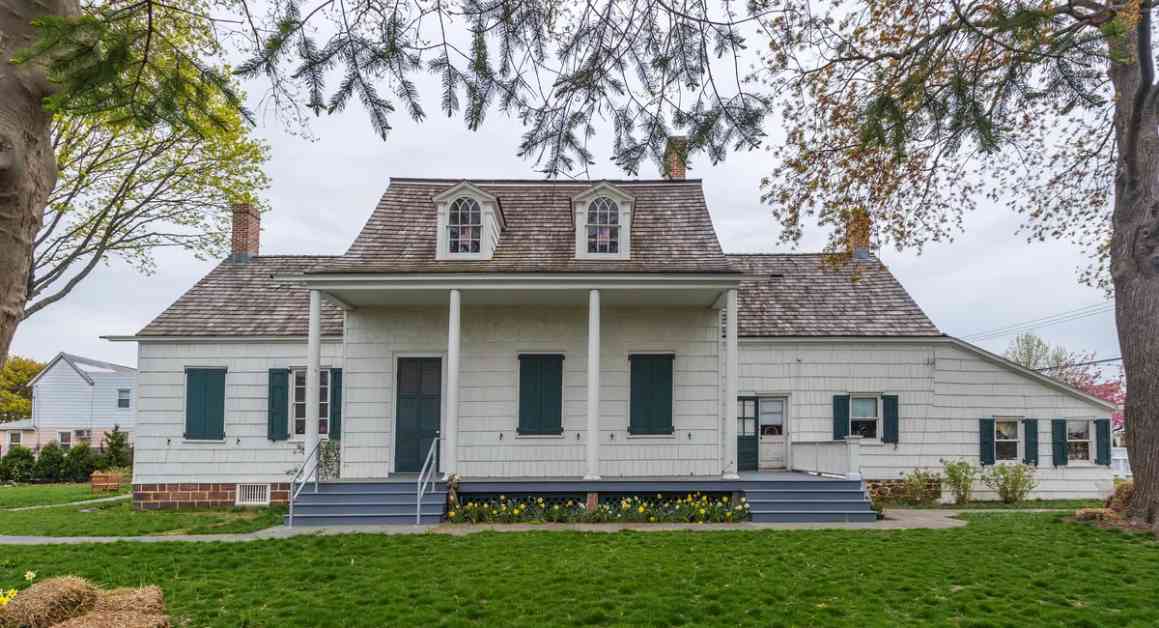Brooklyn’s Oldest Home: A Historical Gem in the Heart of Marine Park
The Hendrick I. Lott House, nestled in the heart of Marine Park, Brooklyn, is a true treasure trove of the borough’s rich history. This historic farmhouse stands as a testament to Brooklyn’s 18th-century past and Dutch Colonial-style architecture, with some parts predating the founding of the United States. Built in 1800 by Hendrick I. Lott, this iconic home incorporates elements of the original homestead constructed by his grandfather, Johannes Lott, around 1720. As one of only 14 remaining Dutch Colonial farmhouses in Brooklyn, the Lott House holds a unique place in the city’s architectural landscape.
A Labor of Love: Preserving Brooklyn’s Heritage
In the early 1990s, a group of dedicated architects and preservation enthusiasts came together to form the Friends of the Lott House. Their mission was clear: to revitalize this historic gem that had fallen into disrepair. Thanks to their efforts, the exterior and landscape of the Lott House underwent significant renovations between 2002 and 2013. The grounds have since become a hub for various community events, breathing new life into this piece of Brooklyn’s past.
Now, as the badly deteriorated interior awaits its turn for restoration, the Friends group is gearing up for the next phase of the Lott House’s transformation. Their vision? To turn this time-honored residence into a fully operational “living neighborhood museum,” offering visitors a glimpse into the rich history of the Lott Family and south Brooklyn. Alyssa Loorya, president of the Friends group and principal of Chrysalis Archeology, expressed her excitement about the project, emphasizing the significance of preserving this slice of New York City’s history.
A Bright Future: Restoring the Lott House for Generations to Come
The upcoming renovations at the Lott House promise to be nothing short of transformative. From updating the home’s century-old electrical system to modernizing plumbing, air conditioning, and accessibility features, every detail will be carefully considered to preserve the residence’s historic charm. These infrastructural improvements will be carried out while maintaining the home’s unique architectural details, ensuring that its legacy lives on for future generations to enjoy.
With work set to commence early next year, the Lott House is on track to become the first public museum in Brooklyn’s serene marshland. This cultural attraction will delve into the area’s vibrant history, the stories of those who once called it home, and the enduring legacy of the Lott family. By bringing a touch of history to this quiet corner of Brooklyn, the museum aims to offer visitors a fresh perspective on a neighborhood best known for its natural beauty.
The Lott House: A Living Legacy of Brooklyn’s Past
The roots of the Lott House trace back to the late 1710s when Col. Johannes H. Lott purchased a 220-acre farm in the Town of Flatlands. Over the years, the homestead evolved from a modest farmhouse to a thriving agricultural hub, diversifying its produce from vegetables to dairy and even oysters. Despite the changing landscape of the city and the dwindling size of the property, the Lott family chose to hold onto their ancestral home, preserving its rich history for generations to come.
As the Lott House prepares to embark on its next chapter, the community eagerly anticipates the unveiling of this living museum. With each restoration milestone, this historic landmark is poised to become a beacon of Brooklyn’s past, offering visitors a glimpse into a bygone era. So, as the Lott House undergoes its much-anticipated transformation, one thing remains certain: the spirit of Brooklyn’s history will continue to thrive within its walls.












